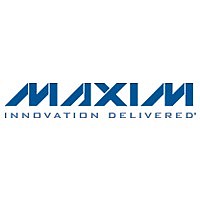DS3104GN Maxim Integrated Products, DS3104GN Datasheet - Page 26

DS3104GN
Manufacturer Part Number
DS3104GN
Description
Timers & Support Products SDH-SONET-Synchronou s Ethernet Line Card
Manufacturer
Maxim Integrated Products
Datasheet
1.DS3104GN.pdf
(136 pages)
Available stocks
Company
Part Number
Manufacturer
Quantity
Price
Company:
Part Number:
DS3104GN+
Manufacturer:
Microsemi Consumer Medical Product Group
Quantity:
10 000
Part Number:
DS3104GN+
Manufacturer:
DALLAS
Quantity:
20 000
________________________________________________________________________________________ DS3104-SE
Digital PLLs have two key benefits: (1) stable, repeatable performance that is insensitive to process variations,
temperature, and voltage; and (2) flexible behavior that is easily programmed through the configuration registers.
DPLLs use digital frequency synthesis (DFS) to generate various clocks. In DFS a high-speed master clock
(204.8MHz) is multiplied up from the 12.800MHz local oscillator clock applied to the REFCLK pin. This master
clock is then digitally divided down to the desired output frequency. The DFS output clock has jitter of about 1ns pk-
pk.
The analog PLLs filter the jitter from the DPLLs, reducing the 1ns pk-pk jitter to less than 0.5ns pk-pk and 60ps
RMS, typical, measured broadband (10Hz to 1GHz).
The DPLLs in the device are configurable for many PLL parameters including bandwidth, damping factor, input
frequency, pull-in/hold-in range, input-to-output phase offset, phase build-out, and more. No knowledge of loop
equations or gain parameters is required to configure and operate the device. No external components are
required for the DPLLs or the APLLs except the high-quality local oscillator connected to the REFCLK pin.
The T0 DPLL to T0 APLL path is the main path through the device. The T0 DPLL has a full free-
run/locked/holdover state machine and full programmability. The T4 DPLL to T4 APLL path is a simpler frequency
converter/synthesis path, lacking the low bandwidth settings, phase build-out, and phase adjustment controls found
in the T0 DPLL.
7.7.1 T0 DPLL State Machine
The T0 DPLL has three main timing modes: locked, holdover, and free-run. The control state machine for the T0
DPLL has states for each timing mode as well as three temporary states: prelocked, prelocked 2, and loss-of-lock.
The state transition diagram is shown in
Figure
7-2. Descriptions of each state are given in the paragraphs below.
During normal operation the state machine controls state transitions. When necessary, however, the state can be
forced using the T0STATE field of the
MCR1
register.
Whenever the T0 DPLL changes state, the STATE bit in
MSR2
is set, which can cause an interrupt request if
enabled. The current T0 DPLL state can be read from the T0STATE field of the
OPSTATE
register.
7.7.1.1 Free-Run State
Free-run mode is the reset default state. In free-run all output clocks are derived from the 12.800 MHz local
oscillator attached to the REFCLK pin. The frequency of each output clock is a specific multiple of the local
oscillator. The frequency accuracy of each output clock is equal to the frequency accuracy of the master clock,
which can be calibrated using the MCLKFREQ field in registers
MCLK1
and
MCLK2
(see Section 7.3). The state
machine transitions from free-run to the prelocked state when at least one input clock is valid.
7.7.1.2 Prelocked State
The prelocked state provides a 100-second period (default value of
PHLKTO
register) for the DPLL to lock to the
selected reference. If phase lock (see Section 7.7.6) is achieved for 2 seconds during this period, the state
machine transitions to locked mode.
If the DPLL fails to lock to the selected reference within the phase-lock timeout period specified by PHLKTO, a
phase-lock alarm is raised (corresponding LOCK bit set in the
ISR
register), invalidating the input (ICn bit goes low
in
VALSR
registers). If another input clock is valid, the state machine re-enters the prelocked state and tries to lock
to the alternate input clock. If no other input clocks are valid for two seconds, the state machine transitions back to
the free-run state.
In revertive mode (REVERT = 1 in MCR3), if a higher priority input clock becomes valid during the phase-lock
timeout period then the state machine re-enters the prelocked state and tries to lock the higher priority input.
If a phase-lock timeout period longer than 100 seconds is required for locking, the
PHLKTO
register must be
configured accordingly.
19-4627; Rev 7; 8/10
26 of 136













